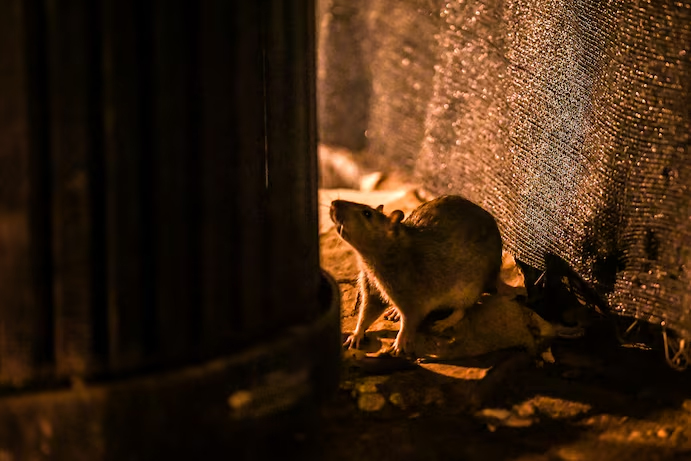Climate & Rats
A new study is the first to link rising temperatures with booming rat populations in cities around the world.
Rising seas, intensifying droughts, worsening floods — these are well-known effects of climate change, the consequences of pumping too much heat-trapping pollution into the air.
Now, we may be able to add another unexpected outcome of human-induced warming to that list:
Rats. Lots and lots more rats.
Urban rat populations are booming around the world due in large part to rising average temperatures, according to an analysis of 16 cities published Friday. The trend is most pronounced in Washington, D.C., followed by San Francisco, Toronto and New York.
The findings have hairy implications for warming cities already struggling to deal with the destructive pests, which spread disease, contaminate food with urine and feces, bite people and pets, chew through wiring in homes and cars, and cause an estimated $27 billion in damage a year in the United States alone.
“It gives cities a better picture of the uphill task that they face,” said Jonathan Richardson, an urban ecologist at the University of Richmond who led the work published in the journal Science Advances.
‘An infinite sea of rats’
It’s hard out there for a rat. During the height of winter, the rodents flee underground or indoors, spending less time foraging for food to feed their young and grow their numbers.
“For a small mammal, it’s pretty tough to make your living in the very cold winter months,” Richardson said.
To assess whether milder temperatures alleviate that winter burden and allow rats to reproduce more, Richardson and his colleagues collected data on rat sightings over a dozen years in cities including Tokyo and Amsterdam. Sightings rose significantly in 11 of the 16 cities analyzed, a result unsurprising to those working in rodent management.
Over the past decade, rat sightings in D.C. jumped by more than 300 percent, while in New York they went up by 162 percent, according to Richardson.
“We live in an infinite sea of rats,” said Niamh Quinn, a human-wildlife interactions adviser at the University of California Division of Agriculture and Natural Resources who was not involved in the study.
About 40 percent of the overall increase in rat sightings is linked to rising temperatures in cities, according to the analysis. Researchers also found that the more densely populated a city is, and the less green space it has, the more urban rats thrived.
The research is the first to find a link between climate change and rat populations, said Kaylee Byers, an assistant professor and urban rat expert at Simon Fraser University in Canada.
“It’s a question we’ve had for a while,” said Byers, who was not involved in the research. The study is “the first one of its kind,” she said, adding that she would like to see more research in labs on the physiology of rodents to see how they respond to temperature changes.
Rooting out the rodents
Of course, it’s more than just rising temperatures allowing rats to proliferate. Urban rodents thrive in areas with poor trash management, where broken garbage bags and open dumpsters offer rats a daily feast.
Some cities are stepping up efforts to end the all-you-can-eat buffet. D.C. has a “rat academy” to train property managers and private exterminators to spot and attack infestations while rogue groups of dog owners root out rats with terriers. New York hired a “rat czar” to pilot a plan for securing trash in bins, where rodents can’t get it.
But rat experts say none of this is enough. In the “war on rats,” the rodents are winning. It is hard to even know the scale of the problem because doing a census on an animal that is nocturnal and hides in sewers and alleys is difficult.
“Hardly any cities are collecting data on rat numbers,” Quinn said. “If you were to look at the cities in the United States, a huge proportion of them don’t have any municipal planning for rats.”
That lack of data forces researchers like Richardson to use the number of complaints to public health officials as a stand-in for rat populations in cities. But rat complaints, he said, are still “a pretty faithful proxy” for population size.
Byers agreed. “It’s kind of the best data we have.”
With temperatures poised to continue to rise and make rat infestations worse, the findings underscore how municipal governments need to move away from simply trying to poison rats and instead removing the food waste and debris that give them sustenance and shelter, Richardson said.
“Understanding that climate warming may lead to a general increase in rats isn’t good news,” he said, “but it’s really important to know the challenges you’re facing ahead of time so that you can dedicate more resources to try to slow that trend.” — Courtesy WP

